Having adequate filtration is a key component to keeping your water clean, both aesthetically and for the health of your fish. You don’t have to spend a lot of money to get a lot more performance out of your existing filters. Using some of these DIY aquarium filter hacks, I’ve been able to keep very high stocking levels in my planted tanks, which allows me to grow out more fish. I've had 50+ guppies growing out happily in a well-filtered 20 gallon aquarium. Using cheap materials you can double or triple the filtering capacity of any filter (although I’ll focus primarily on hang on back (HOB) filters here).
Check out my review of the best HOB filters on the market
First, a very quick summary of the 3 types of filtration.
-
- Mechanical filtration is when a material catches debris as water passes through it.
-
- Biological filtration is the process of bacteria that have colonized the filter media converting toxic ammonia from fish waste into less toxic nitrites, and then into nitrates. Nitrifying bacteria can only live on surfaces in an aquarium, so the best biological media has a very high surface area. This is the key to supporting high bio-loads.
- Chemical filtration is the process of using a chemical to absorb or neutralize toxic ammonia, heavy metals, or medications in the aquarium. Activated charcoal is the most common example. I don’t use chemical filtration in any of my tanks unless I am trying to remove a medication or other contaminant, so that will not be a part of this discussion.
Hack # 1: Intake Sponges
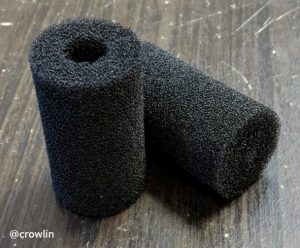
Intake sponges can be purchased in large packs online, and are sometimes even carried in the mega-mart pet stores. These are the easiest way to get more filtering capacity out of any filter. I have an intake sponge on every single filter in my fish room. Buying in bulk each sponge cost me under $3. They slide over the end of the intake stem so that water must pass through the sponge before entering the filter. This provides several benefits.
First, the sponge acts as a mechanical barrier that traps larger debris before it enters the filter. Sponges can be easily cleaned by squeezing them out in a container of old water from the aquarium. This keeps fish waste, excess food, and plant debris from entering your filter and potentially clogging up the impeller or gathering in the bottom.
Second, the intake sponge provides biological filtration due to its high surface area and the constant flow of water moving through it. Most of the commonly sold HOB filters come with a single thin sponge to act as the biological stage. Adding an intake sponge can instantly double your biological filtering capacity!
Third, if you’re a shrimp keeper like me, or you breed and raise young fish, the intake sponge is an absolute necessity. Shrimp can graze on the biofilm and debris that gets caught by the sponge, and even very small fry won’t be sucked up into the filter to meet their demise. The photo below shows the intake on a breeder box used in my guppy rearing tank, which also houses a thriving colony of neocaridina shrimp.
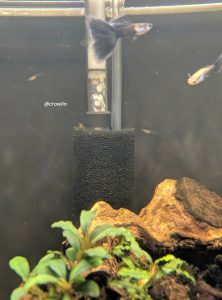
Hack # 2: Water Polishing Filter Floss
For several years I routinely purchased OEM filter pad replacements, not realizing there was a cheaper, superior, more customizable solution available.
What is this water polishing panacea? Polyester quilt batting - AKA filter floss. This stuff is available all over. Google it. You can buy a huge roll for roughly $20 that will last a long, long time. Cut into strips 6” wide by 24” long, a 72” x 90” roll will give you 45 filter floss refills at a cost of under 50 cents each.
I take quilt batting and cut it into strips about 6” wide and 2 feet long, then wrap it around the filter pad frame that came with my HOB filter. This stuff catches almost all of the tiny particles that the intake sponge didn’t capture. The result is crystal clear water. I change it out every 2 weeks, or when it’s brown and gunked up.
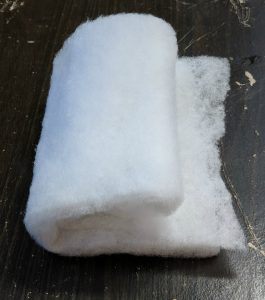
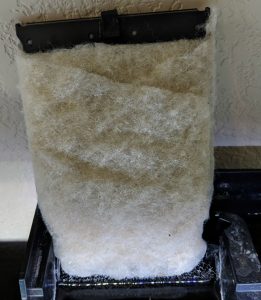
You can also take Poly-fil - which is the same material as polyester quilt batting, just loose fibers instead of a roll - and stuff it into a sump or canister filter. Just use it to replace whatever disposable filter pads you are currently buying, or to supplement your existing media. The important thing to keep in mind with either quilt batting or the loose poly material is that it has to be 100% polyester and not treated with any chemicals in order to safely be used in a filter.
Hack # 3: More Media
So by now you’re seeing that the more media (or surface area) you can get into your filter, the more beneficial bacteria it can support, and the more filtering capacity you’re going to have. A great practice is to cram an extra sponge, a bag of bio-rings, or bio balls into one of your cycled filters if you have unused space. I keep an extra sponge in one of my HOBs, so that I have a cycled sponge on hand if I want to set up another tank (which is inevitable). In the photo below, you can see I have an extra aquaclear sponge stuffed into the empty space on the right side of one of my HOB filters. This space would otherwise be left empty. Instead I’ve increased my filter’s biological capacity.
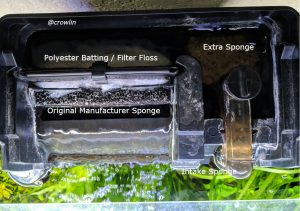
Walking through a pet store looking at the price tags on filter “refills” can be discouraging, but it’s important to note that biological media such as sponges and ceramic rings almost never need to be replaced. Many manufacturers have literature that tells you to discard your bio media after 2-3 months and replace it. This is purely a scheme to increase sales. Ceramic rings and sponges do not go bad, all you have to do is rinse them out in aquarium water to clean them. The only media that needs to be replaced regularly is filter floss and chemical media such as charcoal. In the filter I showed above, the only thing I replace is the polyester batting at a cost of roughly $1 a month. The sponges have been in use for over a year and will last several more.
Hack # 4: Breeder Box Filter
You can take an air driven breeder box and turn it into a customized HOB filter that also acts a quarantine / breeder box. By attaching a sponge to the intake of a breeder box, you’ve already created a sponge filter. You can take this even further by filling the breeder box all the way up with whatever media you want. The great thing about breeder boxes is they increase your total water volume and can hold plants, gravel, bio media, and fish. In my case I use the intake sponge and a bag of biomax rings plus some live plants in the box to add biological filtration while using it for breeding or quarantine.
If you have a large breeder box with vertical dividers, you can create a two or three stage HOB filter that is customized to your needs. You could even use one side as a quarantine and fill the other up with media.
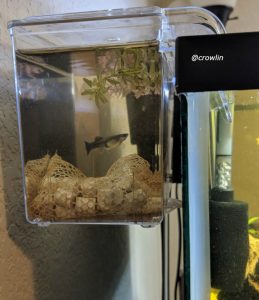
Keep in mind that while all of these hacks will improve your filter’s ability to turn ammonia into nitrate, all those nitrates aren’t going anywhere unless you:
A) Perform regular water changes, or
B) Keep plenty of live plants to soak up those nitrates.
Links to purchase items referenced in this post on Amazon:
Intake Sponges: https://amzn.to/2LqdcLj
Aquaclear Sponges: https://amzn.to/2ur3Gkx
Aquaclear HOB Filters: https://amzn.to/2JphUqJ
Breeder Box: https://amzn.to/2NRMGfb

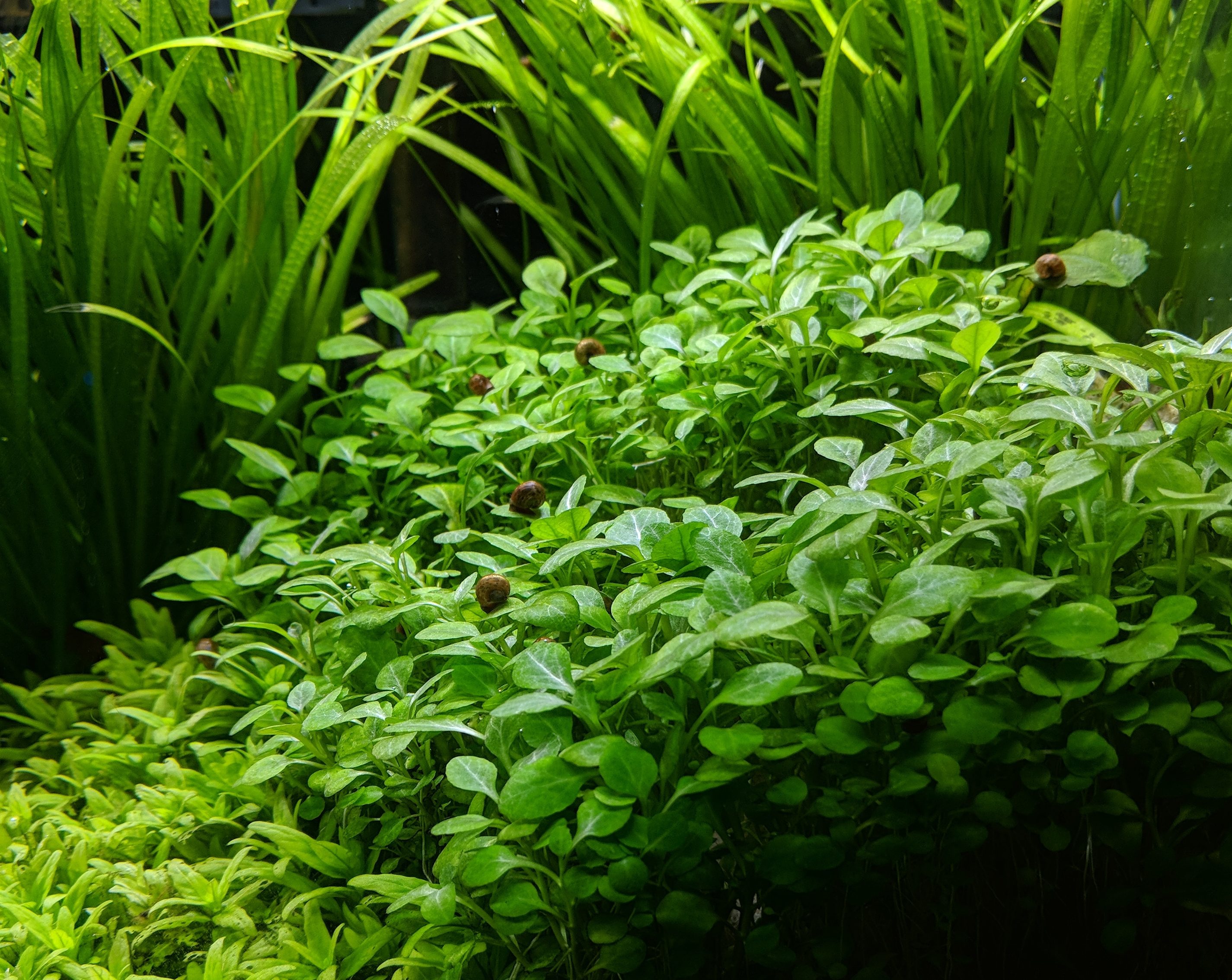
Hi, I had to make a filter out of cereal container, it works very well. My question can you over filter you tank ?
You can't really "overfilter" an aquarium, but you could create a situation where there is too much water flow for the size of the aquarium. I doubt this applies to your situation though.
Actually, I think overfiltration IS possible– consider a tank in which baby triops are hatching. If you thoroughly filter out everything, including the infusoria, the hatchlings will starve. In this situation, you want to filter out the animal waste (as it develops) without filtering out the intended food. Obviously this is not as relevant to a typical fish tank. The real question is, “How much filtration and what kind are appropriate for my tank?” The answer is always “That depends…”
Pingback: Homemade fish tank filter systems - Taunt On Water
Pingback: 10 Best how to make a homemade fish filter – m360.vn
Pingback: 10 Best how to make a homemade fish filter – m360.vn
Pingback: 3 Easy Aquarium Cleaning Tips From a Pro - Odin Aquatics
Pingback: Top 20+ How To Make A Filter For Fish Tank - GA Pet Sitters
Pingback: Top 18 How To Make A Fish Tank Filter - GA Pet Sitters
Pingback: Top 20+ How To Set Up A Aquarium Filter - GA Pet Sitters
thanks for sharing this amazing site list